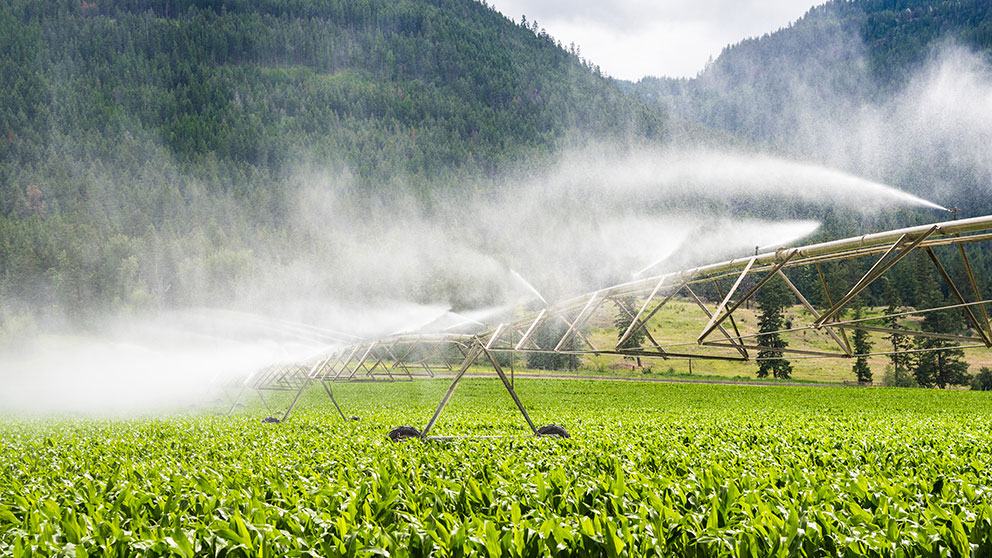Understanding supply and demand

Supply and demand are often cited as the reason for prices going up or down. And understanding supply and demand fluctuations can help you better interpret the dynamics of price determination.
The law of supply states that the quantity of a good supplied rises as the market price rises. In other words, businesses will want to sell more if the price is higher. The opposite is also true - businesses will look to cut back their sales if the price they get is lower.
The law of demand says the quantity of a good demanded falls as the price rises. Buyers will cut back their purchases if they face a higher price and vice versa.
Supply and demand shifts matter a great deal for markets. Suppose that the production of lentils goes up because of excellent growing conditions. If all other factors remain the same, the supply increase will lead to lower prices. Prices will adjust downward to lead buyers to purchase more lentils, given the ample supply in the marketplace.
Now suppose the demand for animal proteins is stronger because of excellent summer barbeque weather. If all other factors remain the same, prices will increase as there’s no more supply in the marketplace in the short-term to accommodate this surge in demand.
While these are basic economic principles, the correlations are rarely that simple.
Local or global
You’ve no doubt seen supply and demand calculations. Production is added to the carry-in to generate a total supply number. From that, all the uses of the commodity are subtracted to generate a carryover stocks estimate. The carryover stocks from one year become the carry-in stocks for the next year.
| Commodity X (million tonnes) | ||
|---|---|---|
| Year 1 | Year 2 | |
| Carry-in | 5 | 3 |
| Production | 15 | 22 |
| Total Supply | 20 | 25 |
| Exports | 13 | 18 |
| Domestic Use | 4 | 4 |
| Total Use | 17 | 22 |
| Carryover (Stocks) | 3 | 3 |
| Stocks-to-Use | 17.6% | 13.6% |
Supply and demand tables can be constructed for a commodity on a worldwide basis, a country basis or even a regional basis. On corn, for instance, a U.S. supply and demand table is often valuable because of the dominant position the U.S. has in corn production and exports.
Stocks-to-use ratio
How do we make sense of all the relevant information available about supply and demand? There’s a lot to consider. That’s where the stocks-to-use ratio comes in. It’s a powerful statistic that summarizes the balance between available supply and demand.
In the example above, carryout stocks of commodity X remained the same from one year to the next at 3 million tonnes. However, the stocks-to-use ratio decreased because total use was higher. The ratio is what’s typically used in the analysis of supply and demand. In this example, the lower ratio indicates a tighter supply relative to the projected demand, which would be positive for price projections.
Substitution
One would expect the price of beef to increase if there’s less production available in the market. However, rather than paying more for beef, some consumers might buy more pork or chicken instead. Rather than looking at the supply and demand of beef in isolation, it can be instructive also to examine other competing meats to account for this substitution effect.
Canola and soybeans compete in oilseed markets. Corn and barley compete as livestock feed. Substitution, though, is rarely perfect. A livestock feeding operation might prefer barley over corn or vice versa. An oilseed crushing facility might be set up to crush soybeans and not canola. Plus, transportation costs and currency exchange figures into the equation.
Market interactions can be complex
Buyers typically complain when the price of crude oil drops, but diesel and gasoline prices don’t fall as much or at all. The same is true for nitrogen fertilizer. A price drop in natural gas used to make nitrogen fertilizer doesn’t necessarily correspond to a drop in urea or anhydrous ammonia values.
In each of these cases, manufacturing capacity matters. Even when crude oil is relatively abundant and cheap, diesel and gasoline prices can remain high if refining capacity can’t keep up with demand. The same is true for nitrogen fertilizer. Less expensive natural gas certainly cuts the cost of manufacturing fertilizer, but manufacturing might be at full capacity.
Time matters
It’s often said that the cure for a high price is high prices. High prices generate the incentive for increased production, and this extra supply will cause prices to drop. However, this usually takes time. Many countries only grow one crop per year. For beef production, it can take years to ramp up supply substantially.
Markets aren’t perfect
While not perfect, analysis of supply and demand will always be important because it captures all the relevant information about prices.
In theory, price discovery flows from supply and demand. However, for commodities with a small number of sellers, competition may be lacking. With international trade, tariff and non-tariff trade barriers can hamper how markets function. As well, real and perceived quality differences and brand loyalty can influence prices.
While not perfect, analysis of supply and demand will always be important because it captures all the relevant information about prices.
Next steps:
Learn more about stocks-to-use ratio
Watch this supply & demand video and see J.P. Gervais work through a real world example
Developing a commodity marketing strategy? Use the information about supply and demand in the marketplace to form your price target/expectations.

Understand the many considerations that influence how farmland is valued to make sound purchases and selling decisions in the future.